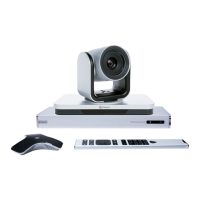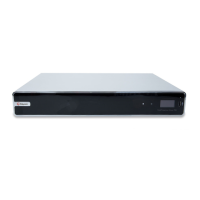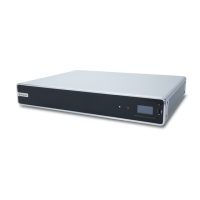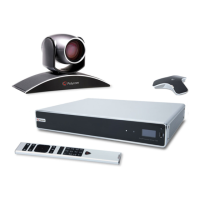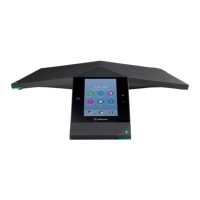voIpProt.SIP.forceConnectionReuse
When disabled (recommended), the system uses an ephemeral source port for outgoing SIP
messages.
When enabled, the system uses the active SIP listening port as the source port (5060 or 5061,
depending on the negotiated SIP transport protocol in use). This can be useful to establish
correct operation with remote SIP peer devices, which require that the source port match the
contact port in SIP messages.
0 (default)
1
voIpProt.SIP.proxyServer
The IP address or fully qualified domain name (FQDN) of the SIP proxy server. If you don't set
this, the registrar server address is used. If you also leave voIpProt.SIP.registrarServer blank,
there is no SIP proxy server.
SIP signaling by default is sent to ports 5060 (TCP) and 5061 (TLS) on the proxy server.
The syntax for this is the same as voIpProt.SIP.registrarServer.
String (0-255)
voIpProt.SIP.registrarServer
The IP address or fully qualified domain name (FQDN) of the SIP registrar server. If registering
a remote system with an edge server, use that server's FQDN.
SIP signaling by default is sent to ports 5060 (TCP) and 5061 (TLS) on the registrar server.
Enter the address and port using the following format: IP_Address:Port.
The IP_Address can be an IPv4 address or an FQDN (e.g., servername.company.com:6050).
String (0-255)
voIpProt.SIP.registrarServerType
Specifies the type of SIP registrar server you're using.
unknown
voIpProt.SIP.serverType
Specifies whether to automatically or manually set the SIP server's IP address.
If set to "Auto", you don't have to set voIpProt.SIP.transport, voIpProt.SIP.registrarServer, or
voIpProt.SIP.proxyServer.
Specify (default)
Auto
voIpProt.SIP.transport
Sets the protocol your system uses for SIP signaling (your SIP network determines which
protocol is required).
Auto (default) - Enables automatic negotiation of protocols in the following order: TLS, TCP, and
UDP. This is the recommended setting for most environments.
TLS - Provides secure SIP signaling. TLS is available only when your system is registered with
a SIP server that supports it. If you set this, your system ignores TCP/UDP port 5060.
TCP - Provides reliable transport via TCP.
UDP - Provides best-effort transport via UDP.
VoIP Parameters
Polycom, Inc. 100

